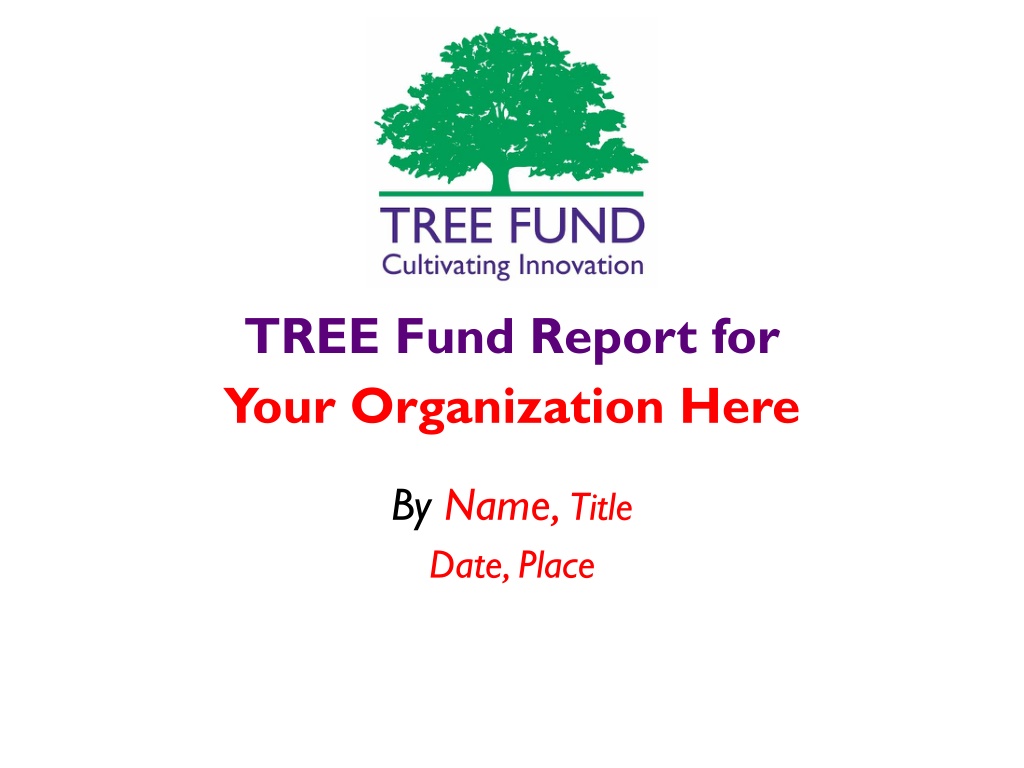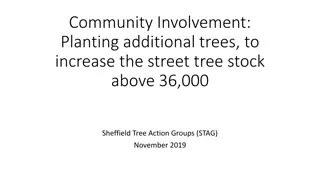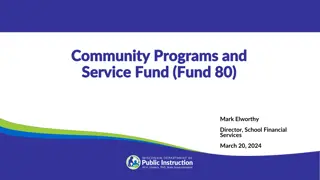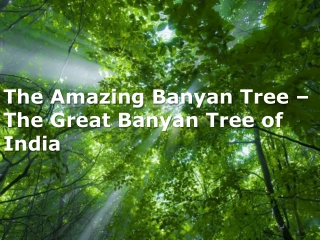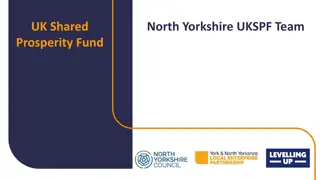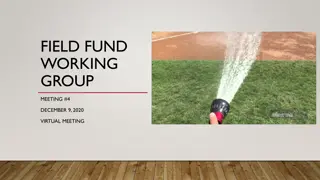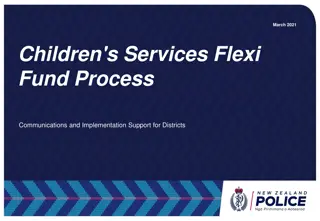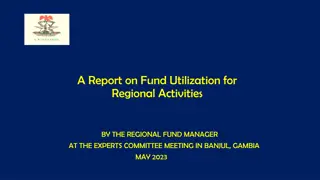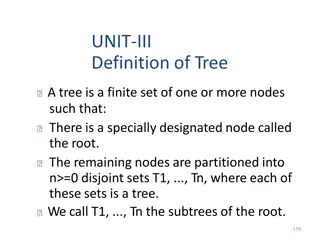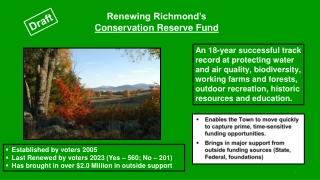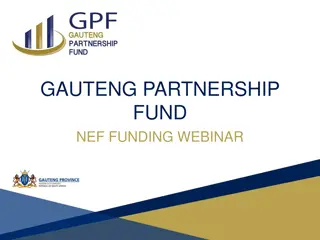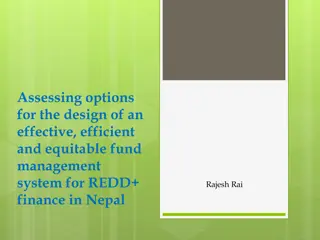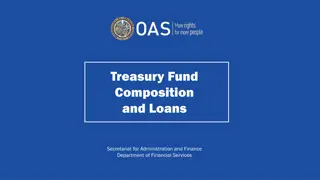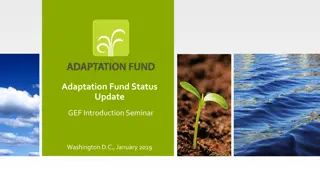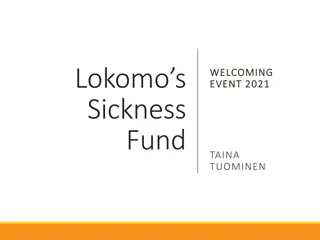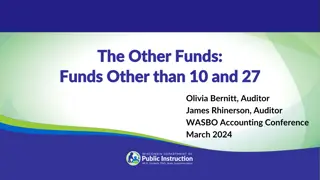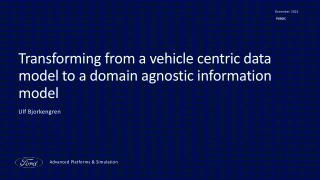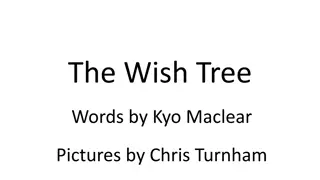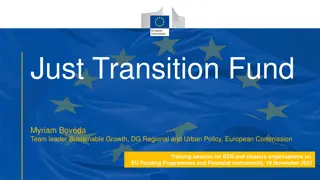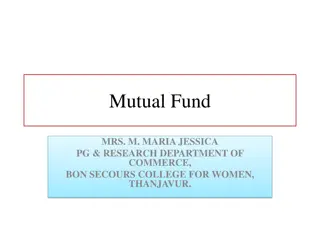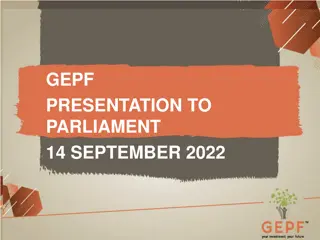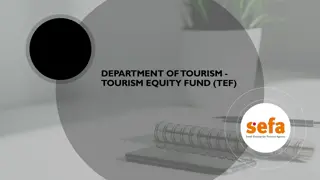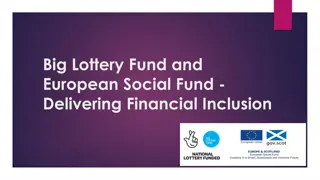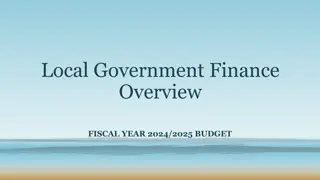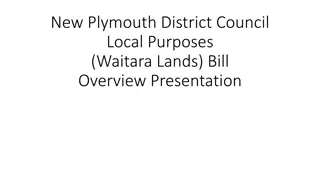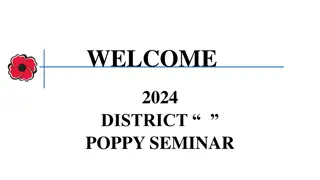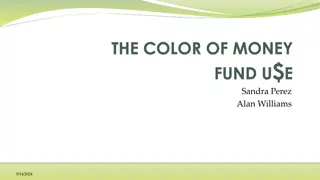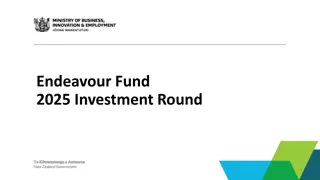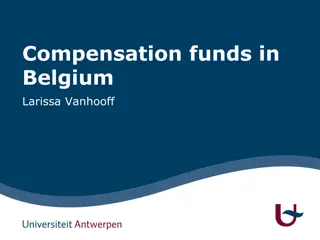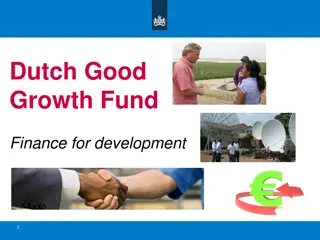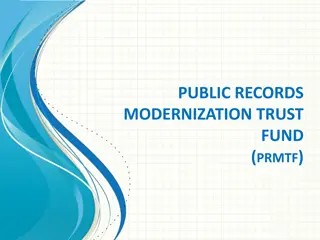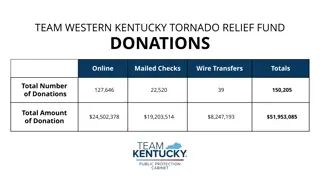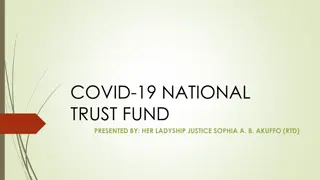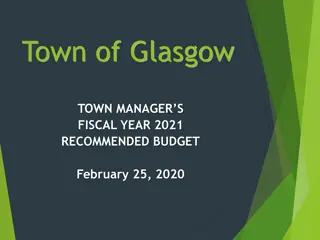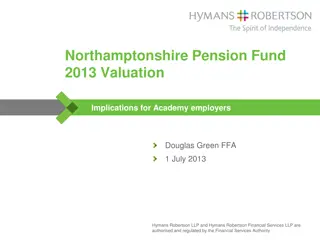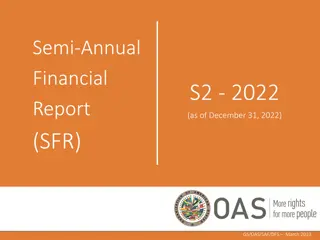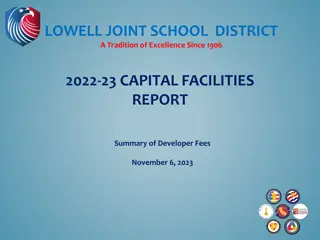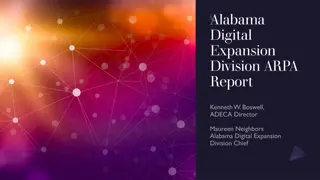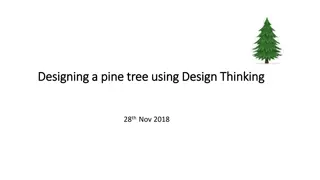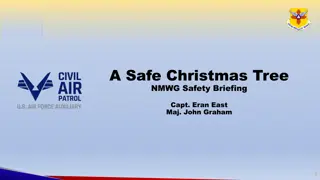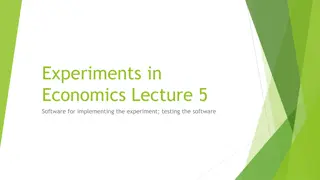TREE Fund Report for Your Organization
TREE Fund is a non-profit organization dedicated to funding programs in arboriculture and urban forestry. Since its establishment in 2002, it has supported scientific research, education programs, and scholarships, awarding over $3.3 million in grants. The organization's revenue sources include partnerships, special events, direct appeals, and endowment earnings aiming to reach $7.0 million by 2020. With a strong organizational structure and notable highlights from 2017, the TREE Fund continues to make a significant impact in the field.
Download Presentation

Please find below an Image/Link to download the presentation.
The content on the website is provided AS IS for your information and personal use only. It may not be sold, licensed, or shared on other websites without obtaining consent from the author. Download presentation by click this link. If you encounter any issues during the download, it is possible that the publisher has removed the file from their server.
E N D
Presentation Transcript
TREE Fund Report for Your Organization Here By Name, Title Date, Place
Organizational History 1976: Research Trust (ISA) 1985: National Arborist Foundation (TCIA) 2002: Tree Research and Education Endowment Fund (TREE Fund)
Mission and Programs Identify and fund programs that support the discovery and dissemination of new knowledge in arboriculture and urban forestry. TREE Fund has awarded over $3.3 million in grants since 2002 for: Scientific research on urban trees Education programs related to trees Scholarships for aspiring tree care professionals
Organizational Structure Based in Naperville, Illinois since 2008 501(c)3 under an Illinois Declaration of Trust: 15 Trustees Liaisons from U.S. Chapters of ISA Standing and ad hoc volunteer Committees Four full time staff, supported by several independent contractors 2018 operating budget (including grant awards) of ~$950,000.
TREE Fund Revenue Sources Partnerships (Including ISA Chapters) Special Events: Tour des Trees (in Ohio in 2018) TREE Fund After Hours (at ISA Conference) Chapter Events (credited to partnerships) Direct Appeals (mail and web) Endowment Earnings: Currently ~$4.4 million, goal of ~$7.0 million by 2020 ~4.5% earnings draw taken per year Planned Giving
2017 Highlights 2017 was a good financial year: Awarded ~$225,000 in new grants (Visit the TREE Fund booth or website to learn about all awardees) Paid ~$210,000 toward prior multi-year grants Endowment up by ~$600,000 to total of ~$4.4 million Completed new 2018 to 2020 Strategic Plan to guide the organization (available on website) Awarded first Safe Arborist Technique Fund grant Offered four webinars with 1,500+ attendees Created searchable research archive on website
2017 Highlights (Continued) Completed fundraising campaign for Utility Arborist Research Fund ($1.0 million, first awards in 2018) Complete fundraising campaign for Bonnie Appleton Memorial Scholarship Fund ($100,000, first awards in 2018) Completed fundraising campaign for Barborinas Family Fund ($100,000, first awards in 2019) Launched campaign for Tree and Soil Research Fund for Landscape Architects ($500,000 goal)
Recent Final Report Highlights Dr. Andrew Hirons (Myerscough College, UK) used a novel method to evaluate and quantify the drought tolerance of over 80 tree species. His work will help tree care professionals identify suitable trees for dry urban environments and play a role in encouraging nurseries to grow underutilized species. Dr. Monica Elliott (University of Florida) compared the efficacy of four systemic fungicides using three different methods in mature coconut palms. A few options showed promise, and her findings are providing foundational knowledge for effective palm disease management. Dr. Whitney Cranshaw (Colorado State University) produced the first full assessment and documentation of drippy blight (which has emerged as the most important pest problem affecting red oaks, trees highly valued for their shade on Colorado s Front Range), from the modes of infection to methods for mitigating its spread. Dr. Oleksandr Gromyko (Ivan Franko National University of Lviv, Ukraine) identified four strains of soil bacteria with particularly strong antibiotic production and salient plant growth-promoting properties. These four represent a promising platform for development of biotechnological tools to alleviate the burden of microbial diseases in arboriculture.
Recent Final Report Highlights Dr. Alessio Fini (University of Florence, Italy) quantified the effect of pervious, impervious and permeable pavement on tree physiology, soil characteristics, and the microclimate of the paved areas, establishing that porous pavements alter the water cycle less, accumulate less CO2, and are better at mitigating changes to soil traits. Dr. Fini s work will help develop best practices for managing city greenspaces. Dr. Gregory Dahle (West Virginia University) looked specifically at how load transfers from a tree trunk to the root-soil plate, in order to help better understand how trees resist overturning. Dr. Dahle found that load and strain are equally distributed in the root system; thus, arborists should consider leeward and windward roots equally important in tree stability. Dr. Mohammad Asrafur Rahman (Technical University of Munich, Germany) analyzed two tree species in contrasting street canyon conditions. He discovered large differences in cooling potential between the species and conditions and also found that water use efficiency is more strongly related to cooling potential than growth rate. Dr. Rahman continues to build on his findings to create a model for predicting impact of trees on urban microclimates. Dr. Bryant Scharenbroch (University of Wisconsin Stevens Point) evaluated two organic materials biosolids and biochar for their potential for rapid remediation of urban soils. While the two agents had different effects on the soil, both led to healthier and faster growing trees. Future research will refine application rates for these additives and identify the best biosolids and biochars to use.
2018 Research Grant Programs Hyland R. Johns Grant Program Spring Cycle, Up to $50,000 each Utility Arborist Research Fund (New in 2018) Spring Cycle, Up to $50,000 each John Z. Duling Grant Program Fall Cycle, Up to $25,000 each Safe Arborist Techniques Fund (New in 2017) Spring Cycle, Up to $10,000 each Jack Kimmel International Grant Program Fall Cycle, Up to $10,000 each
2018 Education Grants and Scholarship Programs Ohio Chapter ISA Education Grants ($5,000) Robert Felix Memorial Scholarships ($5,000) Bonnie Appleton Memorial Scholarships ($5,000) New in 2018 John Wright Memorial Scholarships ($2,000) Horace M. Thayer Scholarships ($3,000) Fran Ward Women in Arboriculture Scholarships ($3,000)
2018 Webinars Dr. Michael Arnold, Texas A&M University Do Planting Stock Decisions Really Make Much Difference Down The Road? February 22 at 12:00 p.m. Central Dr. Whitney Cranshaw, Colorado State University Invasive Insects of Shade Trees: A 30 Year Perspective from Colorado May 2 at 12:00 p.m. Mountain Dr. Brian Kane, University of Massachusetts, Amherst ArboricultureBiomechanics August 23 at 12:00 p.m. Central Dr. Dan Herms, The Davey Tree Expert Company Emerald Ash Borer: Strategies for Conserving Ash in the Urban Forest November 14 at 12:00 p.m. Mountain
Upcoming in 2018 Tour des Trees: July 29 to August 4 Hosted by Ohio Chapter 530 miles in seven days Overnights in Columbus, Mohican Park and Kent Corporate Partners defray expenses, so all rider fundraising supports research 125 rider cap, so register now!
Upcoming in 2018 (Continued) TREE Fund After Hours at ISA International Tuesday, August 7 Friendraising and fundraising fun: Open to all! Enhanced Communications Monthly TREE Press Quarterly Research Reports Website and Social Media improvements New grants/scholarships Utility Arborist Research Fund Bonnie Appleton Memorial Scholarship
Key Cultural Themes Open the Circle We must bring in partners from outside the tree care industry via expanded focus on community engagement and improved access to research findings Tell a Better Story It s not just about how our work benefits the tree care industry, but also how our industry benefits homeowners, municipalities, the environment, our children, etc. Friend Raising It s just as important as fundraising; we want people to understand and believe in our mission for the long haul, not just write an occasional check at a booth and forget about us
How Can You Help? Attend webinars Receive TREE Press and share widely Manage fundraising or friend raising events Become a partner Support operations with business and individual gifts Establish an endowed fund Recommend fundraising prospects to TREE Fund Invite researchers to share their work at events Communicate with TREE Fund Apply for grants
For More Information, Including Contacts: TREEFUND.ORG
